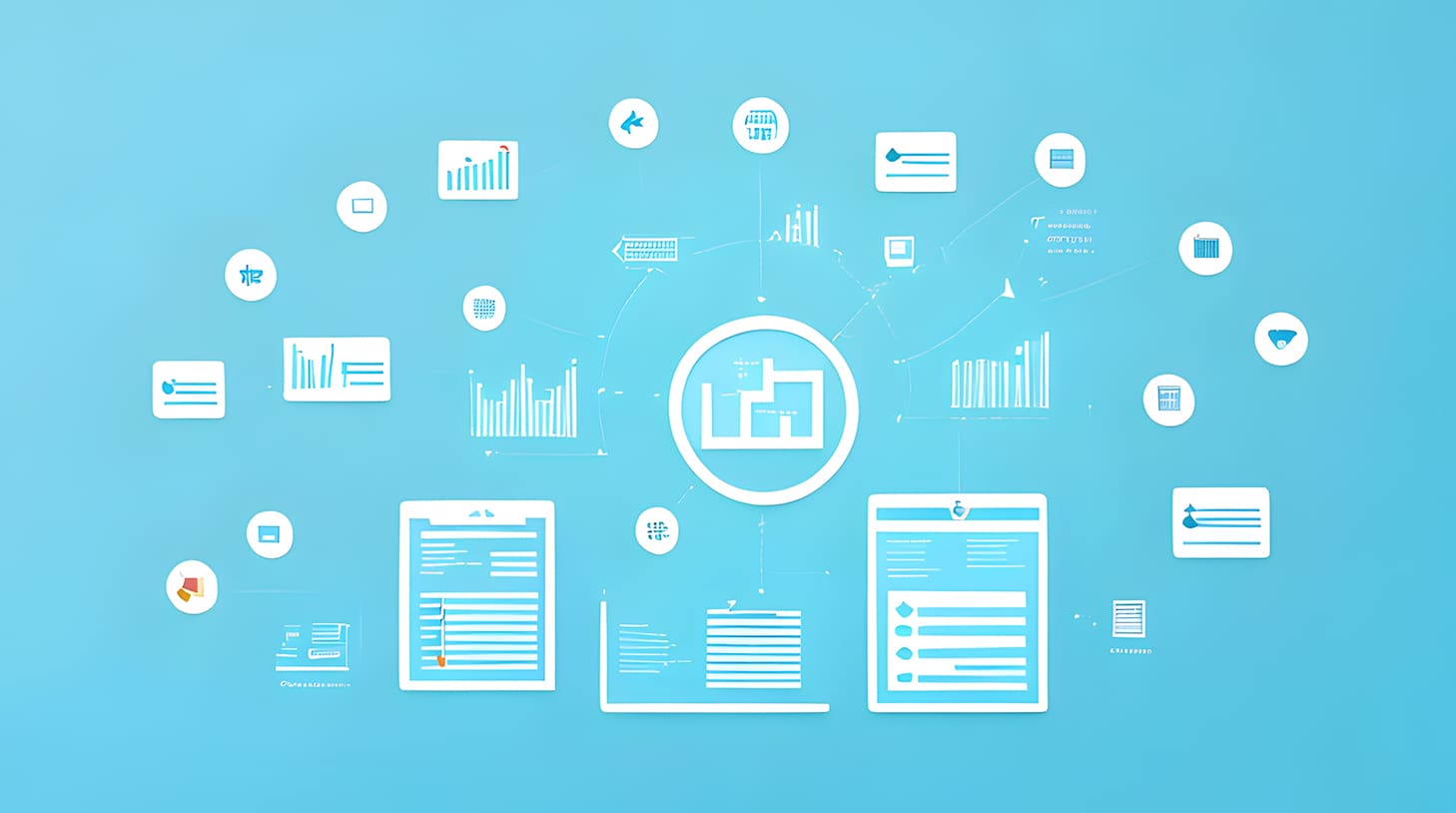ROI of people analytics: augment your value in HR
Here, we explain the importance of collecting and analyzing people data to drive business success and how to show the ROI of people analytics. You will learn how to collect, package, and identify insights from people data, demonstrate its value and build a consistent people data strategy that can be leveraged for concrete business results.

Either you’re an HR executive who knows the importance of collecting and analyzing people data to drive business success, or you’re an HR professional looking to get executive buy-in for a project or purchase that you just know will lead to results – but you need to speak the “bottom line language”.
In other words, you want to show the ROI of people analytics. You want to demonstrate that it’s worth it to invest in deep people data and build an analysis strategy.
People analytics can provide a wealth of insights into employee behavior, productivity, engagement and retention – and perhaps more importantly, that knowledge can be leveraged to make informed decisions that positively impact the bottom line. Plus, you show your own value in the role – crucial in a time where ROI is a primary metric when reviewing performance and value.
Skip all this and go straight to the 10 HR formulas that can help you calculate the data in meaningful ways.
Contents
What does ‘ROI of people analytics’ mean?
First, before we start, let’s get into what ‘ROI of people analytics’ actually means for you and your business. It refers to the financial return on investment gained from collecting, analyzing and interpreting data related to your employee resources. It’s also a measurement of the value of that data and how it directly ties back to business success.
That’s pretty succinct. Now, let’s get started on how you can showcase the ROI of people analytics.
1. Collect people data
Collecting people data can seem challenging at first glance, but it is crucial to ensure that the data collected is accurate and relevant to the business. Getting a ‘sense’ of the working environment (or, as some like to say, the temperature of the room) isn’t good enough. You need concrete information.
One way to collect data is to use a combination of surveys, focus groups and interviews to get a comprehensive understanding of employee attitudes, behaviors and morale.
Another effective way to collect data is to use technology such as employee monitoring software and data analytics tools. There are even softwares that can anonymously monitor all communications that happen within a company, including video meetings, emails and text communications.
The word ‘anonymous’ is important here – you still want to respect the privacy of your colleagues and employees.
Related: 4 people data mistakes you’re making in the employee lifecycle
2. Package people data
Once you have a comprehensive people data repository, you need to package that data in meaningful ways so it’s easily understood by stakeholders. Use visualizations such as graphs, charts and dashboards so your audience doesn’t have to work to understand it. You’re likely addressing people who value time, so make sure your visualizations are easy to digest.
Whether it’s the HR executive, board member or investor in your company, they’ll appreciate something that has clear insights and highlights, but at the same time doesn’t force a specific narrative on them.
You can customize to meet the specific needs of different stakeholders, whether they are HR managers, directors, executives, board members or investors – all have their own part in the play.
Most importantly – draw clear ties to revenue. For example, a Forbes study finds that companies who focus on employee experience (EX) amass 1.8 times greater revenue growth than companies who don’t. You can start from there.
3. Identify insights
There are several key insights to watch for when analyzing people data. These include employee engagement, retention, performance and diversity.
Greater employee engagement clearly equates more productivity. Retention means less investment in backfill and turnover – and more seasoned workers. Higher performance is self explanatory.
And diversity? The positive business impact of diversity in the executive level is real: companies in the top quartile for gender diversity at that highest level are 21% more likely to generate higher profits than those who are not, according to McKinsey. Again, that’s an example of how you can find insights in people data that tie directly to revenue. Which brings us to the next section:
Tie people data to company revenue & strategy
Insights can be fun and interesting but they’re pointless unless you draw a clear link to the bottom line. That’s the ROI of people analytics – showing the return on your investment in tangible terms.
The good news is there are some quick ways to do this:
1. Identify KPIs that have a direct impact on revenue
Start by identifying the KPIs that have a direct impact on revenue, such as customer satisfaction, sales numbers or productivity metrics. You don’t have to tie these to people analytics just yet – right now, just pull together those KPIs.
2. Compile your business goals
Then, identify the business goals that can be achieved through effective people management. For example, if the business goal is to improve customer satisfaction, then you can look for people data points that contribute to achieving that goal.
3. Identify the correlations between people data and revenue/goals
Now that you have the numbers, KPIs and goals in front of you, it’s time to find the correlations between people data points and revenue KPIs and company goals. For example, if you find that an increase in employee engagement leads to higher productivity, and higher productivity leads to increased sales, then you can draw a direct tie between employee engagement and revenue. And then you would have a case for investing in initiatives that drive employee engagement – such as a company outing, a team-building event, free in-house lunches every Wednesday, and so on.
Yes, tying people data points to company revenue and overall business strategy requires a deep understanding of the business goals and how they can be achieved through effective people management.
This will involve a bit of homework on your part, but by identifying and tracking all these metrics, you can demonstrate the real ROI of people analytics.
Now it’s time to present your findings. But, of course, you’ll run into some challenges, such as skeptical stakeholders. Let’s focus on that.
Showing skeptical stakeholders the value of people analytics
Some leaders and managers will “get it” right away – others may not. That’s the reality of business – sometimes it’s additional work to get people to buy into your idea. And you may also get some initial pushback.
It’s important to know that in many cases, the pushback is legitimate: the stakeholder is responsible for their piece of the pie in the business and they want to know the value your project or idea can bring to them.
Here are a few ways you can get buy-in from the skeptics:
1. Understand their concerns
Start by understanding the concerns of skeptical executives. Are they skeptical of the data being used? Are they unclear about the benefits of people analytics? Once you understand their concerns, you can address them more effectively.
An example of what you can say to them: “I understand that you may have concerns about the data being used. I’d be happy to walk you through our data collection methods and how we ensure the data is accurate and relevant to our business goals.”
2. Highlight the potential benefits
Highlight the potential benefits of people analytics, such as improving employee engagement, retention, and performance, and ultimately driving business success.
An example of what you can say to them: “People analytics can provide valuable insights into employee behavior, productivity, engagement, and retention, which can drive business success. By collecting and analyzing data and presenting it in a meaningful way, we can demonstrate the tangible ROI of people analytics and contribute to achieving our business goals.”
3. Use real-life examples
Use real-life examples of successful ROI in people analytics to demonstrate the value of people analytics in achieving business success.
An example of what you can say to them: “[XYZ Company] used people analytics to identify high-performing employees and replicate their behaviors in others, resulting in a 5% increase in revenue. By leveraging the power of people analytics, we can achieve similar results and drive business success.”
4. Demonstrate the connection to business strategy
Demonstrate the connection between people analytics and overall business strategy by tying specific people data points to business goals and showing how people analytics can contribute to achieving those goals.
An example of what you can say to them: “By collecting and analyzing data related to employee behavior, productivity, engagement, and retention, we can identify areas for improvement and implement changes that directly contribute to achieving our business goals. For example, by improving employee engagement, we can drive higher customer satisfaction, which is a key business goal.”
There’s one common theme through all of this: be clear and concise in your communications and language, whether it’s in email, Slack, in person, video, phone, or anything else. You want them to see exactly what you’re seeing.
ROI of people data: for you and for your business
Defining ROI is a must in today’s competitive business landscape. The more you clearly outline the ROI of your contribution and recommendations in your job, the more indispensable value you build for yourself in the eyes of those who manage the company.
People data is no exception to that rule – whether you’re in the trenches as an HR generalist or you’re leading the charge as an HR executive, it’s smart to have a consistent people data strategy that can be leveraged for concrete business results.
Frequently asked questions
- What does ROI of people analytics mean?
- The ROI of people analytics refers to the financial return on investment gained from collecting, analyzing and interpreting data related to employee resources.
- What are some effective ways to collect people data?
- You can collect people data through surveys, focus groups, interviews, employee monitoring software and data analytics tools.
- ow can you package people data?
- You can package people data in meaningful ways by using visualizations such as graphs, charts and dashboards that are easy to understand for stakeholders.
- What are some key insights to watch for when analyzing people data?
- Some key insights to watch for when analyzing people data include employee engagement, retention, performance and diversity.
- How can you get buy-in from skeptical stakeholders for people analytics?
- You can get buy-in from skeptical stakeholders by understanding their concerns, highlighting the potential benefits of people analytics, using real-life examples and demonstrating the connection to business strategy.



